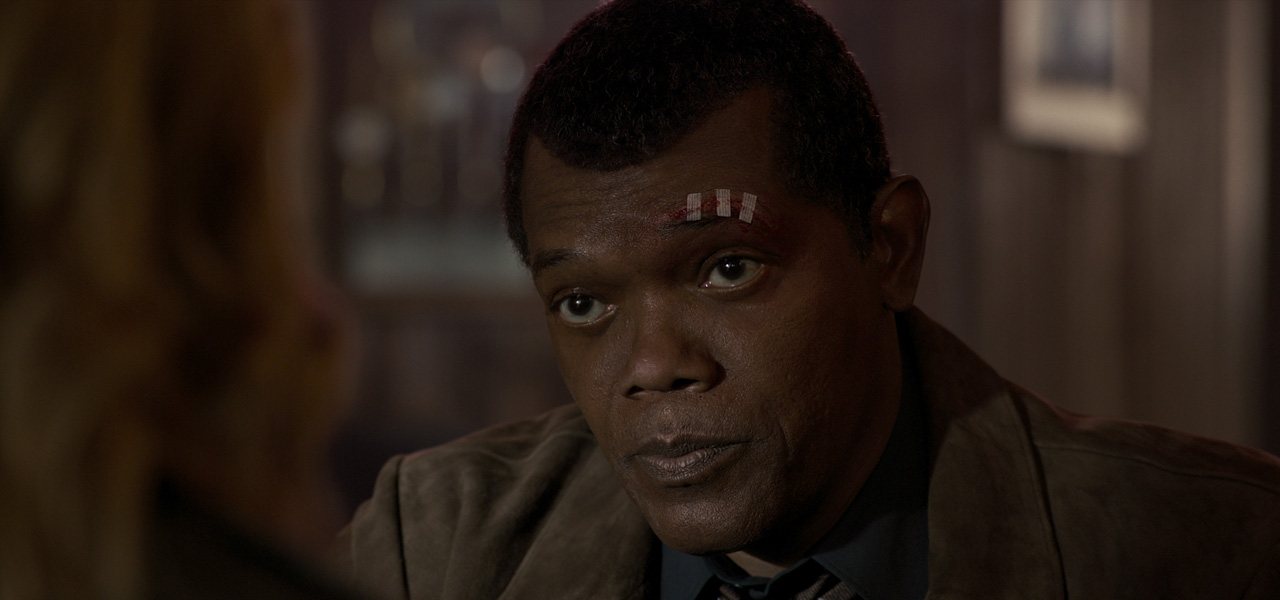
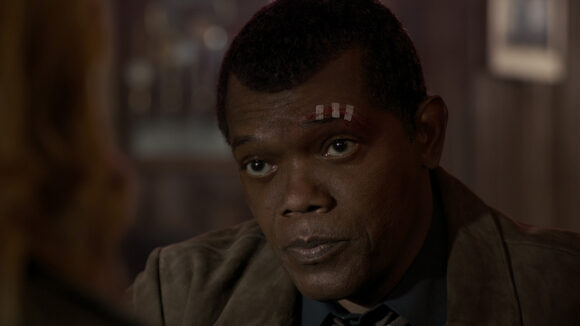
How Samuel L. Jackson Was De-aged For Just About All Of ‘Captain Marvel’
In the months leading up to the release of Anna Boden and Ryan Fleck’s Captain Marvel, it was reported that the actor Samuel L. Jackson would go through a digital visual effects de-ageing process in order to play his character Nick Fury from 1995. When people saw the film, few might have realized that de-ageing work would appear in so much of the final story.
De-ageing is already a meticulous, time-consuming process, used in several previous Marvel films, but here in Captain Marvel it had to happen over pretty much the entire movie. That required the full arsenal of leading ‘youthening’ effects studio Lola VFX, and a few other companies, to pull off the Nick Fury shots.
Cartoon Brew asked production visual effects supervisor Chris Townsend and Lola visual effects supervisor Trent Claus how the particular Samuel L. Jackson shots were carried out, how exactly people ‘age,’ and what things an artist needs to look for in doing de-ageing work.
‘So many shots’
De-ageing techniques in Marvel films found initial prominence in 2011’s Captain America: The First Avenger, where Lola manipulated the size of actor Chris Evans to make him into a ‘skinny’ version of his character, Steve Rogers, before he becomes a super-soldier. Vfx supervisor Chris Townsend also oversaw the visual effects on that film, and had learnt several lessons about, among other things, how to acquire the original performance on set.
“You can so quickly step on the performance, and you can change the performance, and you can change the intent of the actor, and that is something that everybody, particularly directors, are absolutely against,” said Townsend. “So on Captain Marvel, we had to do everything possible to always be going back and forth and watching the scene with the performance of the original plates with Samuel L. Jackson, and watching our youthful version to check that, emotionally, it gave us the same response.”
During post-production, additional visual effects supervisor Janelle Croshaw oversaw the de-ageing work on a day-to-day basis, working closely with Lola and with vfx companies Rising Sun Pictures, Industrial Light & Magic, and SSVFX, which also delivered youthening shots. “Lola had by far the bulk of the work, and they led the way, and created the template of what was required,” said Townsend. “But it was a team effort. There’s no magic bullet here. It’s all about artists painstakingly frame-by-frame going through and trying to make sure that you youthen, but you don’t step on the performance at all.”
A change to the process
The quantity of shots meant that Lola reviewed its methodology for acquiring the performance needed to carry out the de-ageing work. Usually, a double is hired who is the rough age and complexion of the original actor and who is filmed in both principal photography and in post-element shoots to acquire reference. This time, Lola found during testing that it was able to achieve suitable results without the need for such a double for Samuel L. Jackson.
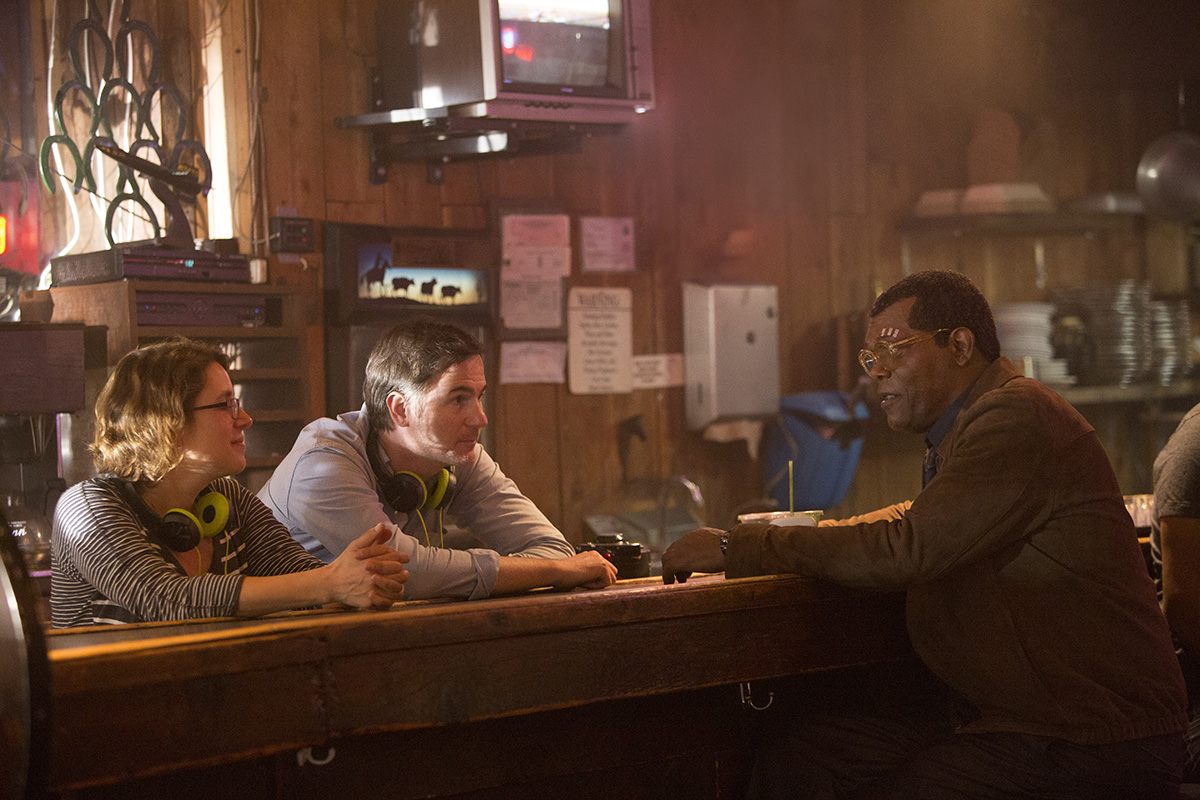
“He’s aged very well, so whereas someone else might have a lot of wrinkles we need to remove, Sam really doesn’t,” said Lola’s Claus. “It’s more of a structural change over time, for example, the width of things and the mass of things in proportion to other features. Those are the sort of things that have changed the most. So it’s more a re-shaping, re-sculpting, and then working on the consistency and texture of the skin rather than removal of wrinkles or filling in of gaps.”
On set, Jackson wore a wig and had some tracking dots on his face (although less than usual) which had to be removed in post. As the footage rolled in, Lola brought that into its compositing system. A 3d track or matchmove is conducted on many of the shots. Artists begin by painting out the tracking dots. They used a photogrammetry scan of the actor done during the testing phase and further scans provided by production to help with the tracking.
As they began the compositing process, Lola had to keep consistency in mind, and, of course, an age for Jackson that they were aiming to hit. Luckily, the actor starred in several films in the 1990s, hence, there was ample reference. “We looked at things like Pulp Fiction and Die Hard 3,” said Claus. “What’s really interesting about that era of Samuel L. Jackson movies is if you look at how he looked in Jurassic Park (1993), compared to how he looked in Pulp Fiction (1994), he looked much older in Jurassic Park than he did in Pulp Fiction. Ultimately there’s a movie called One Eight Seven, which wasn’t as big of a movie as those others, but it really had the look that we were going for, the perceived age of Sam in 1995, rather than how he appeared in the movies of ’95.”
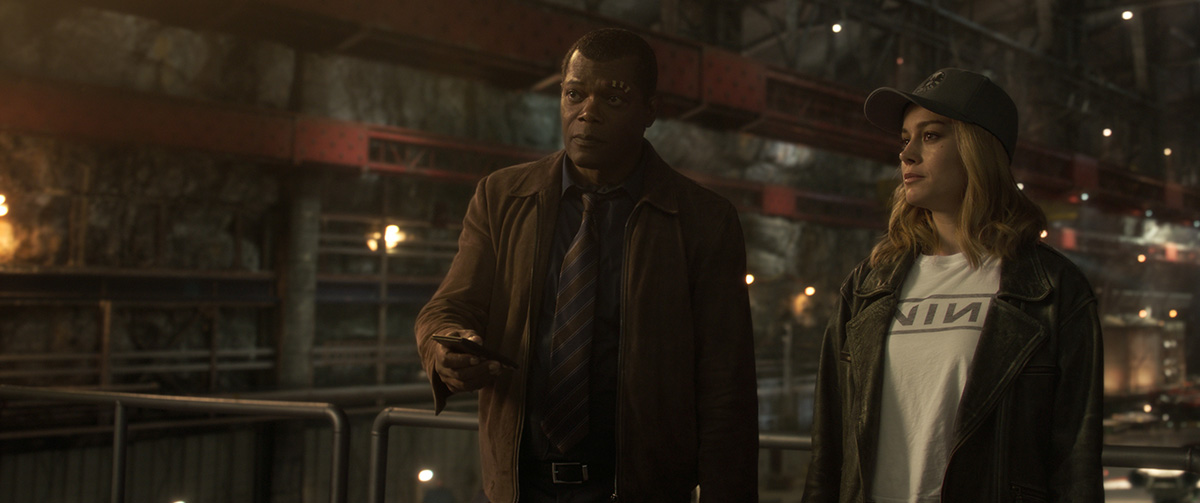
What parts are de-aged, exactly?
Lola has built up a large body of de-ageing work, and the matching knowledge about how people age. “Everybody’s different, everybody ages and sags and wrinkles, and develops imperfections differently,” noted Claus. “There are some generalities, however. Everyone’s face drifts down, which is from the effects of gravity over decades, so your jowls and your cheeks and your chin and your throat – those things tend to creep lower and lower and lower and lose their elasticity. With men in particular, the mass of the lower jaw really changes.”
“Then there things that are caused by behavior, sun exposure and discolorations and spots on the skin and even things like the side of your face that you sleep on,” added Claus. “The vertical creases on your forehead tend to develop on the side of the face that you sleep on. So if you start to see those forming, just roll over and try sleeping on the other side for a while!”
For Jackson’s eyes, Lola made allowances for how the distance between a person’s eyeball and the lower eyelid increases as they age, which gives more of the red tissue inside the lid. Artists also provided for (i.e. reduced) the greater gap between the eyelashes and the eyeball that happens over time, and the muscle structure beneath the lid which tends to get more creases. “The eyeball itself usually gets more broken blood vessels and capillaries, so your eyes will just naturally be redder as you get older,” said Claus. “That was adjusted through the sclera, which had to be made more white. That’s one where it’s really easy to go too far and just give people scary ‘Scooby-Doo’ villain eyes and that’s not what we want.”
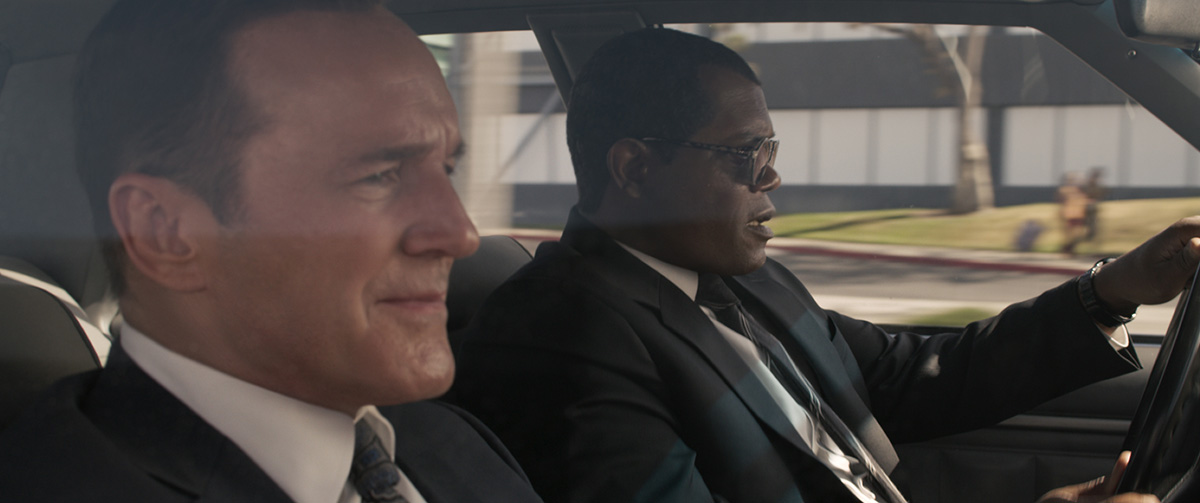
Eye color was yet another factor to consider, with Claus observing that the color of the iris tends to fade. “With Sam, it was darker than when he was younger, the iris was a little less defined than it used to be, and certainly the connection between the eyeball and the skin and eyelids around it have changed, the adhesion of the lids to the eyeball and things like that have changed, so we had to make adjustments there.”
During the film, Fury sustains an eye injury needing a plaster. This was most often worn by Jackson as a practical make-up effect, with Lola performing prosthetic clean-ups and adjustments, or provided the effect from scratch.
Jackson’s body and clothes were additional elements that needed adjustment. “There was a lot of work done to the body and posture to make him look 20 to 25 years younger,” said Claus, “and that also then entails rebuilding of backgrounds and construction of clean plates and all that sort of thing to accommodate those changes. With any body change, that then also affects the clothing that he’s wearing, so a lot of times we’ll have to adjust how it fits or sometimes even replace it entirely, and even create new clothing wrinkles.”
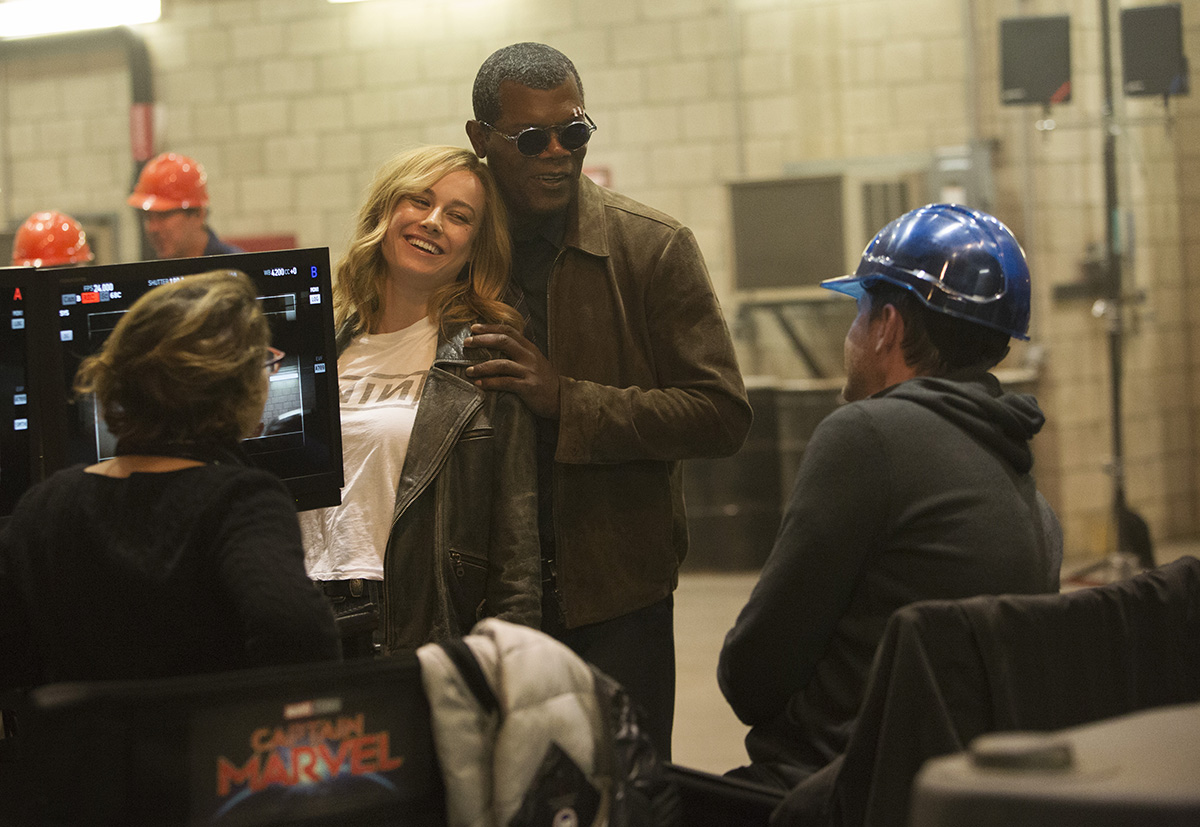
How the de-ageing actually happens
Although 3d tracking and the use of scanned models of actors play a large part in the studio’s de-ageing work, the actual process is largely 2d done in compositing software Autodesk Flame, with some compositing also done in Foundry’s Nuke. The compositing involves painting, adjusting lighting and shadows, smoothing of skin, warping, and many different layers of treatment. The process is driven by hero shots, as Claus describes.
“I tend to pick a defining shot for a sequence or one that’s representative of all the shots in a sequence and assign that to one of my lead artists and they’ll set a look for the sequence and then all the others working on that sequence would then have that to match to. That way we can compare and contrast differences. I think that it’s super important for consistency’s sake to have something to work toward and not just 60 people all going off in their own directions. We’ll review them all independently in our theater here and then we also do onion skin overlays that I build in Flame to compare shots and make sure that proportions are matching.”
Claus adds that to get to a final result, the Lola artists need to have a good understanding of anatomy and the changes that happen to human features as they age. “They also art-direct fundamental things like light and shadow, and how the consistency of the skin would vary under different lighting conditions. They need a good handle on proportions – just having the chin a little bit too long can really throw the feel of the shot and of the character.”
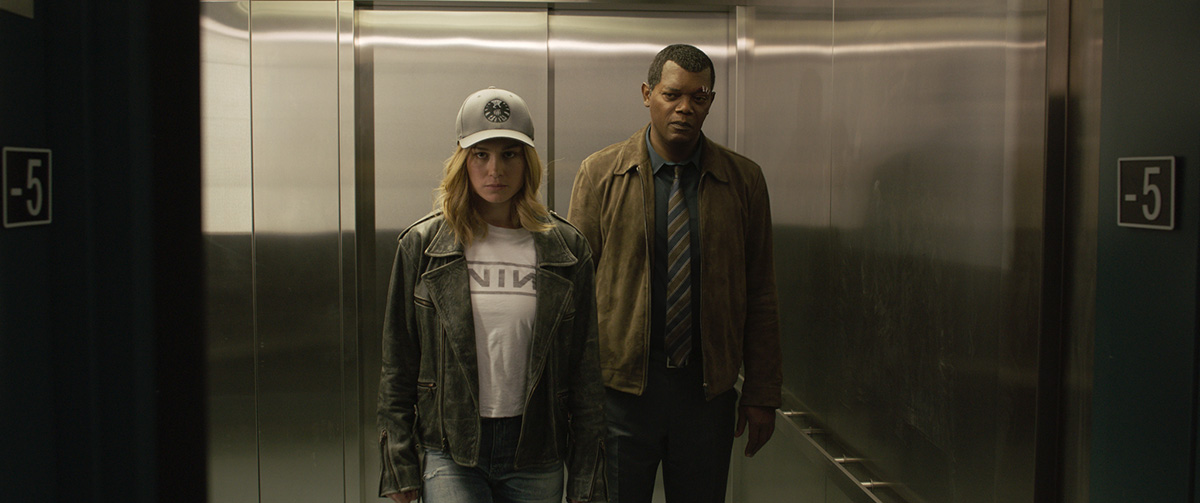
“Our hope,” said Claus, “was that because there’s so many, shots, that people would be excited when they first see Fury on the screen and think, ‘Wow, he’s much younger!’ And then within a shot or two they will forget about it and they’ll just believe the character and that really is our ultimate goal. That’s what we were striving for.”

.png)